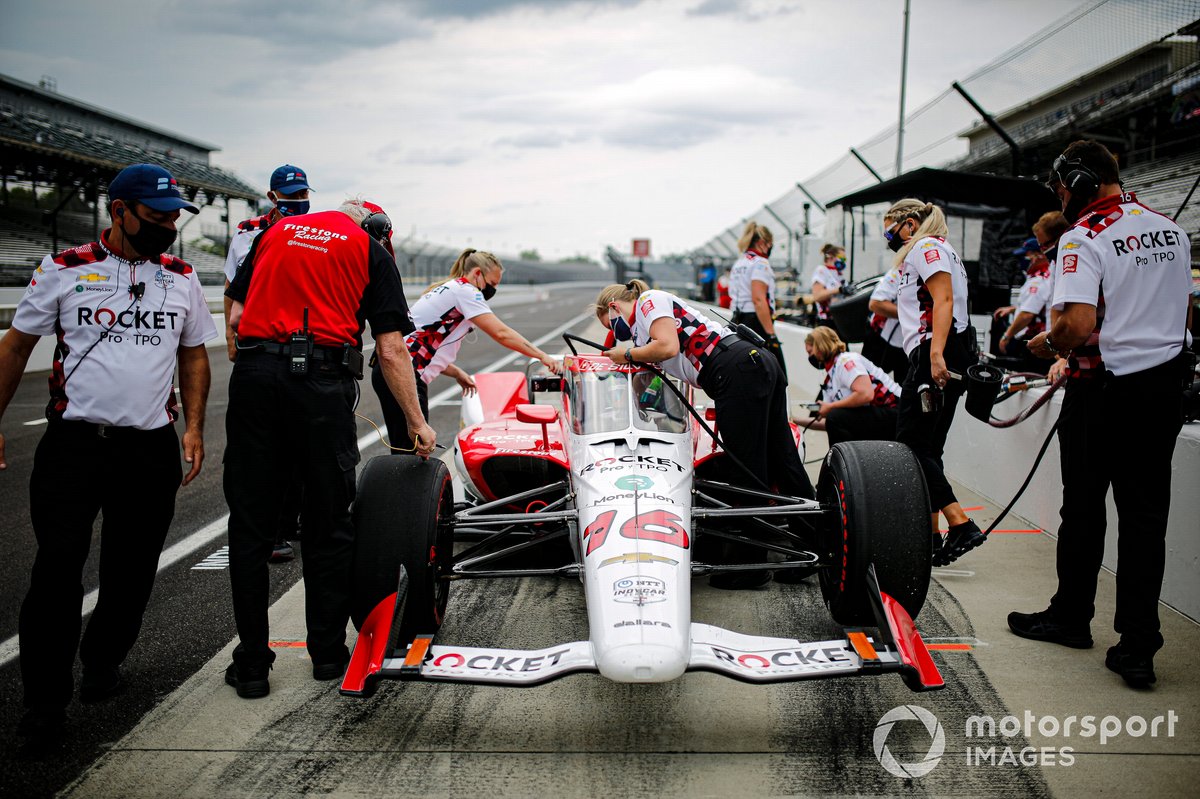Although the Indianapolis 500 is naturally the most attractive race in the IndyCar Series schedule for a start-up team that includes 19 women among its 30-strong team, there is also a high risk of disappointment in a year when 35 cars are competing for the 33 spots on the grid.
“Absolutely, and we actually considered doing a bundle of races,” said Paretta when asked about the risk of failing to qualify.
“Part of it has to do with Simona’s day job as a Porsche factory driver so there were some conflicts with some of the dates, so we looked at that.
“But we decided collectively with Roger [Penske] and [Penske Entertainment] upper management that we would start here and then go from here.”
Asked if this meant there were more races coming up, Paretta nodded – and Autosport understands the team is interested in getting an oval, a road course and a street course under its belt in 2021.
De Silvestro, who is racing for Porsche in ADAC GT Masters championship, seemed keen for more IndyCar outings.
“I am at the moment under contract with Porsche, but I think in that sense I’m pretty lucky that they are really a big racing brand,” she said.

Simona De Silvestro, Paretta Autosport-Chevrolet
Photo by: Barry Cantrell / Motorsport Images
“I think even when I called them about doing the Indy 500, it didn’t take two seconds for them to let me do it.
“From that point of view I think it’s really special. They know how important IndyCar is, as well, so yeah, from that point of view I think I’m lucky for them to kind of be on my side for those things.”
Paretta said she was encouraged by the response to the creation of the team, which fell neatly into Penske Entertainment’s ‘Race for Equality and Change’ initiative that was set up last summer.
“We got a ton of CVs, a ton of resumes, through the website, through my LinkedIn, every way,” she said.
“From a lot of men, as well, which was lovely.
“In fairness because it was such a short timeline, we really relied on people that we knew and had a relationship with, and then kind of like ‘one degree of separation’ – like going to a resource like Jefferson Hodges with Team Penske who had previously worked with a bunch of the women before or knew them through the NASCAR Technical Institute. We really were pragmatic about it.”
shares
comments
